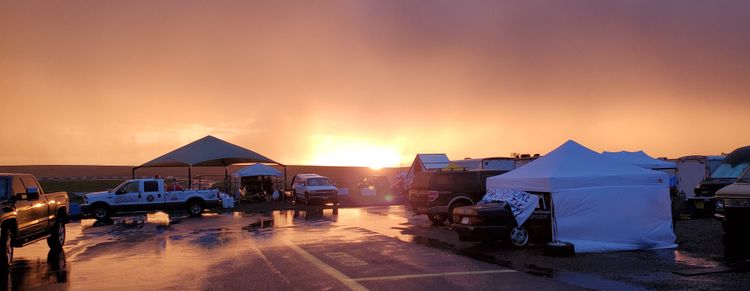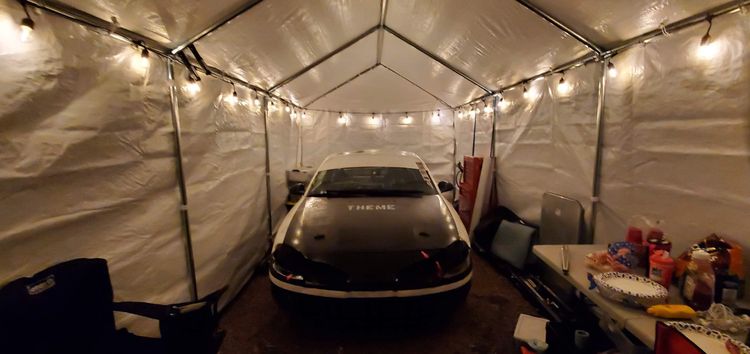Race Operations: Rotations and Pit Tactics
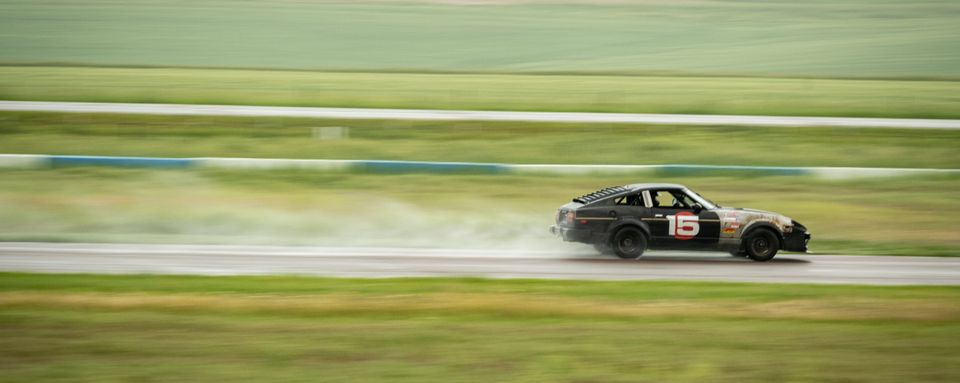
Did you say Race Strategy?
Yes, I did. Frankly I'm a little offended you're so surprised. We may be a bunch of half-assed crapcan racers, but we're still racers. We're still using half our ass. Lemons strategy is about keeping the car on the track, and turning laps. It's really the same as most kinds of racing. It's about consistent pace, consistent pit stops. It's about tires, and brakes, and not breaking down.
In this post I'm going to talk about two components of how we run the race: Driver Rotations, and Pit Tactics.
Driver Rotations
In the zx2, our driver rotations and session times have always been dictated by fuel. It has a 12.7 gallon tank, at race pace we consume that in about 2 hours, so our typical rotation plan is 1h 50m. Pit stops in this car are both fuel and driver change. We average 8 minutes for the "Pit Lap". We always plan out our expected driver change times before the race. Here was the plan for the first day of the BFE GP 2023:
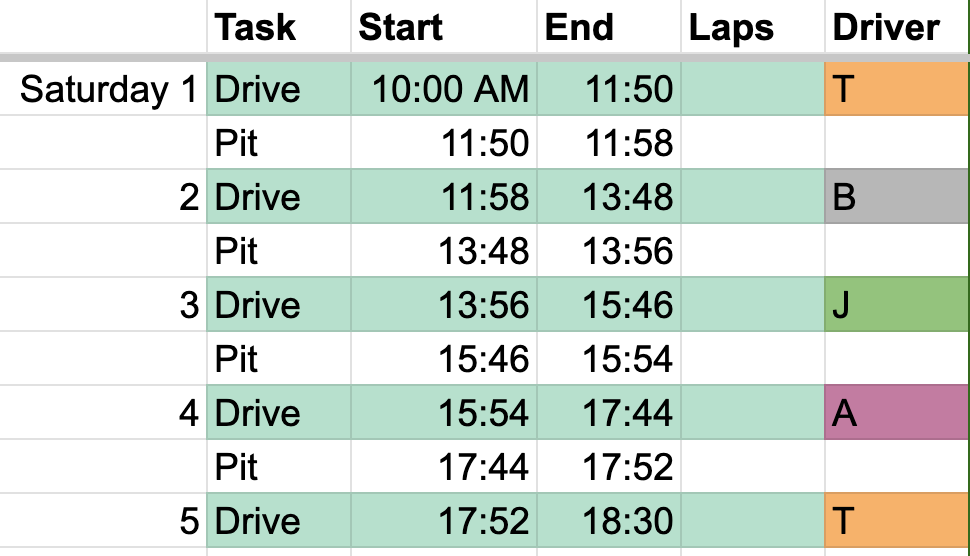
We use spreadsheet formulas to compute each pit using stint time (1h 50m) and pit time (8m) as variables.
No plan survives first contact with a lemons race, as the saying goes. And so it goes for us too - race results don't always line up with the plan.
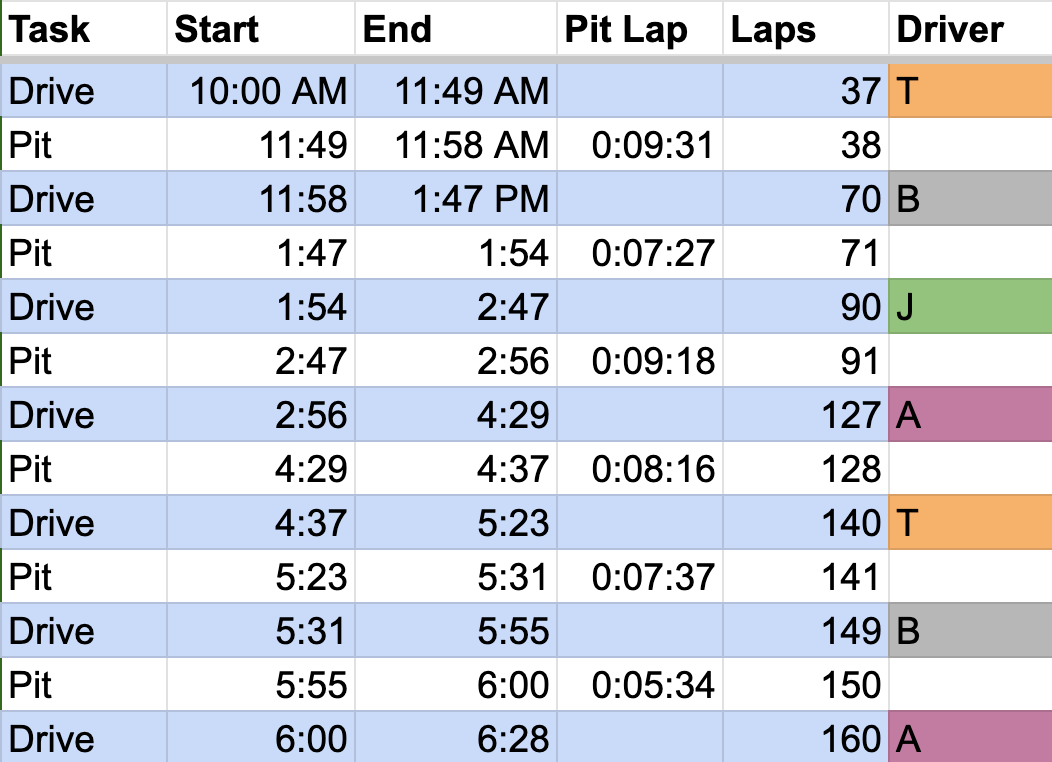
As I mentioned in our race recap, one of our first time drivers got ill on track, and cut his stint short. Not only was that unfortunate, but our beautiful race plan was in tatters! The remaining drivers decided just to split up the remaining time so that each of them got a little extra seat time.
This spreadsheet approach takes a bit of setting up, but once you've got the sheet built, adjusting the plan to reality becomes much easier. And in Lemons, you have to expect a lot of adjustment.
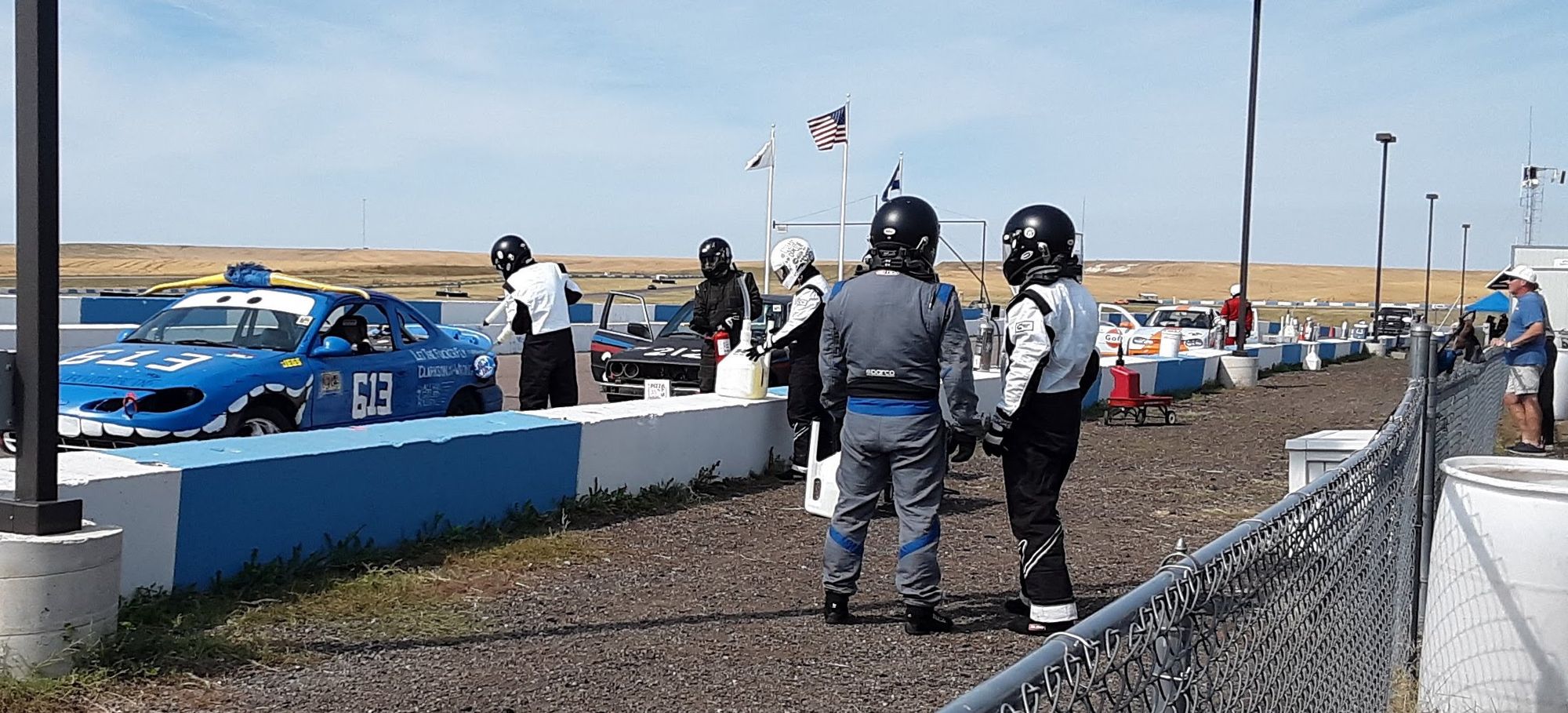
Pit Tactics
We try to be prepared, and fully focused for our pit stops. Race shenanigans aside, refueling is probably the most dangerous part of this sport. The hot pit is an active place, with a dozen cars in at any given time. You, and ten other teams have open fuel jugs, pouring into hot cars, right above hot exhaust. We want to be quick in the pits, but let's not screw around when "immolation" is in play.
Be quick, but don't hurry.
-John Wooden
As we're suiting up in the paddock, we decide who is doing what for any given stop. Ideally you have 3 crew, and the two drivers (one getting out, one getting in). In a pinch we'll get by with 1 crew, and the two drivers. However many people are available for a stop, we never let the driver entering the car handle fuel - a long stint with gas spilled on you would be extremely unpleasant.
A pit stop consists of getting your current driver out, refueling with an aimed fire extinguisher, and inserting your new driver. We use two Hunsaker 5 gallon QuikFill jugs in every stop. Two crew run those, while a 3rd points the fire bottle (extinguisher).
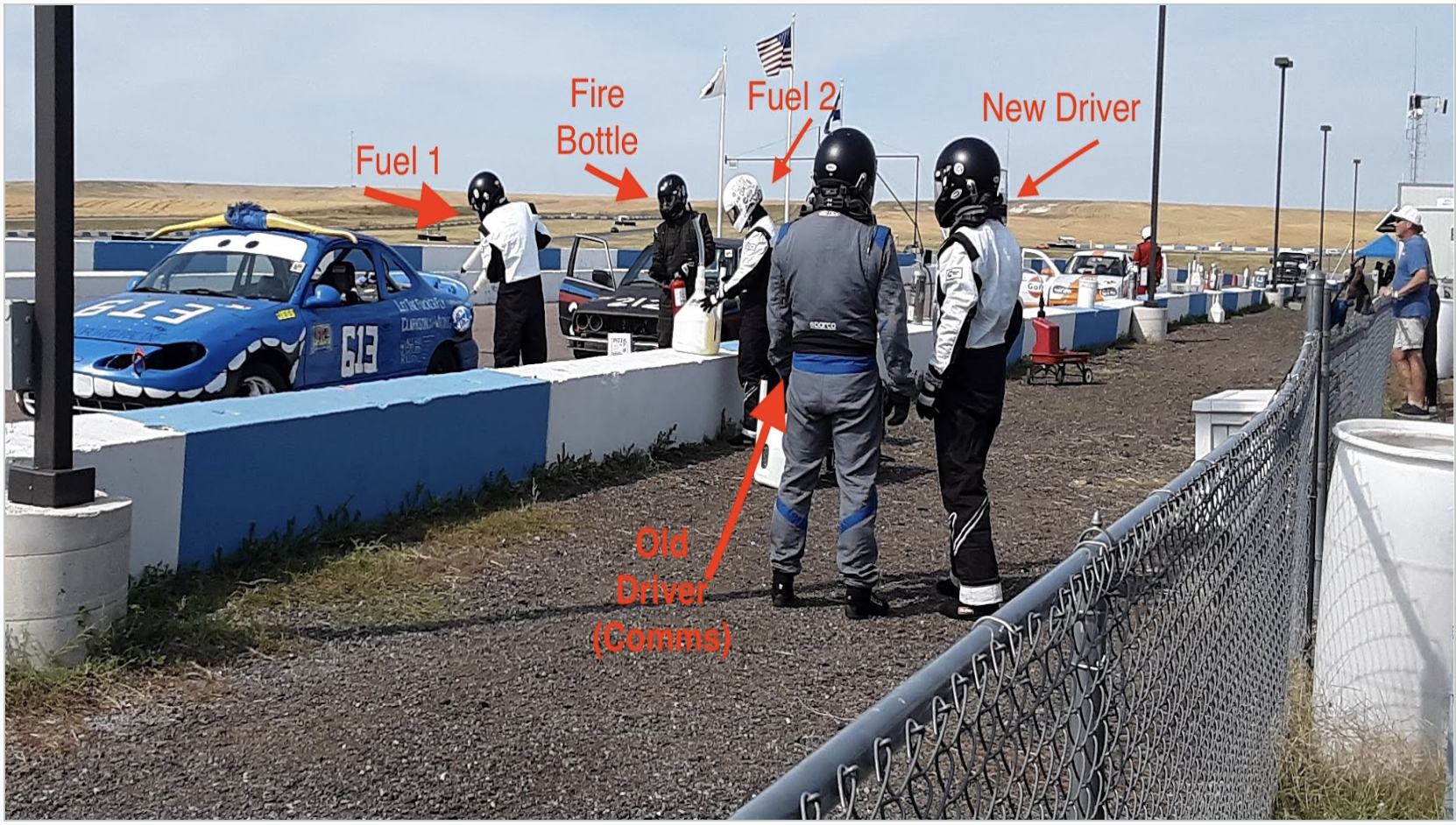
Pit stops are pretty straightforward, but there is quite a lot going on. After you refuel, you need to load your driver, and get your gear back to the paddock. Each person has responsibilities during the pit stop:
Exiting Driver
- Receive clear signal to Box
- Hand signaling for pit is not required, but is encouraged
- Approach the hotpit slowly
- An unnamed team member once earned a black flag for blasting down the hotpit. Don’t be that fucking guy
- Eyes up, and scanning for the team sign
- Pull in parallel
- Car in Gear
- Ebrake
- Kill switch
- Pop your belts
- Remove comms
- Exit the vehicle, get over the barrier
Fuel 1
- First person to fuel
- Places fuel tray
- Helps load new driver
- Secures passenger side belts
Fuel 2
- Takes care of exiting driver comms
- Fuels second
- Helps load new driver
- Takes care of entering driver comms
- Secures drivers side belts
Fire Bottle
- Holds fire extinguisher, pin pulled, pointed at fueler at all times
- All focus is on the fueler, you aren’t watching cars or other activities
- Grabs fuel jugs and fuel tray
- Load the wagon
Entering Driver
- Chat with departing driver, get info on car, conditions
- Wait patiently, visor DOWN
- Enter vehicle, check belts are in position
- Hands on ceiling bar
- Verify Comms
- Kill switch ON
- Ignition, gas, go
- REASONABLE PIT SPEED
- An unnamed team member once earned a black flag for blasting down the hotpit. Don’t be that fucking guy
- Prepare for exit check (belts, hans, wristband)
Our two goals in the pits are to not catch on fire, and to be consistent. If you look at the spreadsheets above, you'll see that we planned for an 8 minute "pit lap", and we experienced an average 7m50s average pit lap!
"Consistent" and "consistency" are pretty boring words. In most contexts being told you're "consistent" is just slightly better than a backhanded compliment. But in racing, particularly in endurance racing, being consistent is everything. Consistency can be understood, planned for, managed, and improved on. Consistency in the pits, means you can focus on a topic for an upcoming post: Managing Pace.
